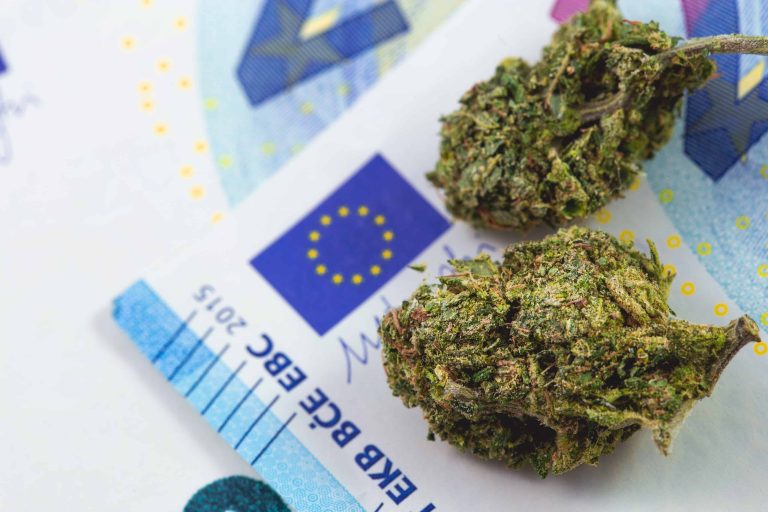The European Monitoring Centre for Drugs and Drug Addiction’s (EMCDDA) report, entitled “Cannabis—the current situation in Europe (European Drug Report 2023),” describes cannabis as “by far the most commonly consumed illicit drug in Europe.”
The report cites national surveys which show that 8% of European adults (out of approximately 22.6 million people between 15 and 64 years of age) have used cannabis within the last year. An estimated 1.3% of adults (approximately 3.7 million people) are described as “daily” or “almost daily” consumers.
With the popularity of cannabis continuing to grow, the report notes that this often leads to consumer “problems.” “There remains, however, a need to understand better the kinds of problems experienced by cannabis users, as well as the referral pathways and treatment options available for those with cannabis-related problems,” the report stated.
The report adds that in data featured in the 2021 European Web Survey on Drugs, 95% of participants who use cannabis within the last 12 months, 32% chose to consume “resin,” 25% chose edibles, and 17% preferred extracts. In the European Union (EU), tested resin contained 20% THC, whereas flower was tested at 9.5% THC.
The EMCDDA claims that 97,000 people entered drug treatment programs for “problems related to cannabis use” in 2021, with 55,000 of those people doing so for the first time.
Additionally, records of cannabis product seizures in 2021 also reached its highest point in more than 10 years. The report cites Spain as the country with the highest percent of cannabis product seizures at 66%.
Overall, the EU reportedly seized more than 202,000 cannabis resin products (equating the seizures to 816 tonnes, or 1,798,972 pounds) in 2021. Cannabis flower seizures were recorded at 256 tonnes (or 564,383 pounds). In the country of Turkey alone, 9,800 seizures for cannabis resin products yielded 33 tonnes (or 72,752 pounds) and 31 tonnes (or 68,343 pounds) of cannabis flower.
“There is an increasing diversity of cannabis products available in Europe. This is true both for the illicit drug market and for consumer markets, where products are appearing that contain low levels of THC but also other substances derived from the cannabis plant such as CBD,” the EMCDDA wrote. “On the illicit drug market, the availability of high-potency extracts and edibles is a particular concern and has been linked to acute toxicity presentations in hospital emergency departments.”
The report also cited concerns for the synthetic cannabinoid hexahydrocannabinol that has recently become available in certain EU countries.
The EU is made up of 27 countries, some of which have enacted medical or recreational cannabis legalization to help prevent the black market from thriving.
In December 2021, Malta was the first EU country to legalize recreational cannabis. The country’s approach to regulating possession, cultivation, and sales, Malta allows for residents to possess seven grams of cannabis in public (or up to 50 grams at their personal residence), as well as up to four plants cultivated at home.
More recently, German officials have been hard at work developing a regulatory framework for cannabis legalization. In April 2023, the newest draft reflects the use of state-controlled non-profit social clubs. If passed, it would allow residents at least 18 years or older to purchase up to 25 grams of cannabis per day (or up to 50 grams per month). Those who are 18-21 years old would be limited to just 30 grams per month.
Other EU countries are also currently working on their own versions of legalization, including Luxembourg, Czech Republic, and the Netherlands.
Switzerland on the other hand is currently allowing numerous cannabis research trial pilot programs in certain parts of the country. The SCRIPT study, which is conducted by the University of Bern, doesn’t legalize cannabis but was created to examine the “health and social effects” of regulated cannabis at local pharmacies. “Our study therefore does not aim to legalize cannabis in the free market—but to be able to address the problems caused by prohibition and the black market and to test possible harm reduction approaches, as well as a strict control of supply and distribution use demand for cannabis,” said head of SCRIPT researcher Reto Auer.
